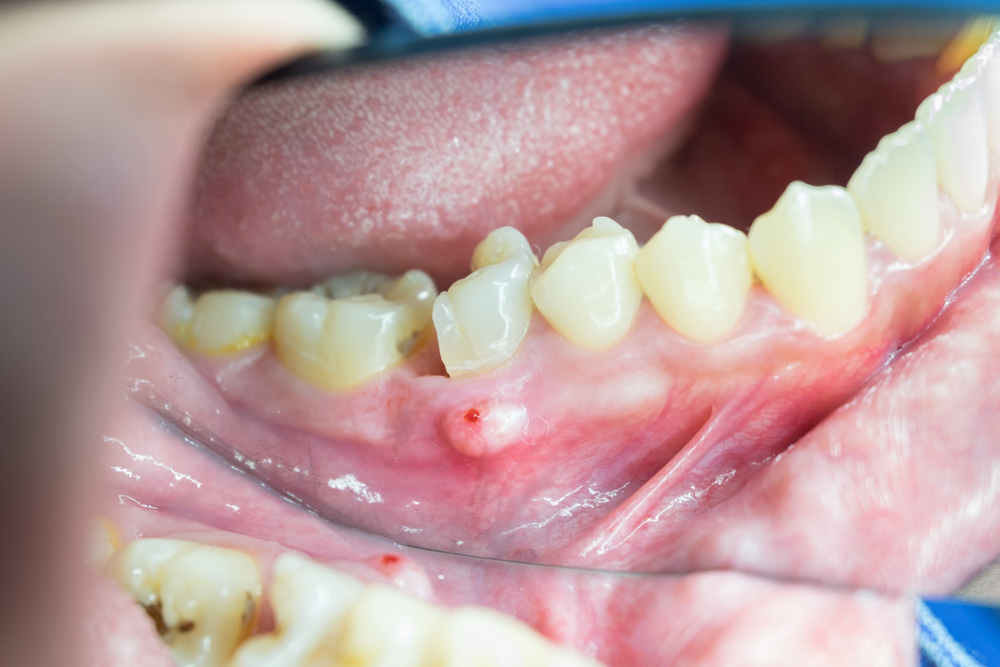Tag: tooth infection treatment litchfield
Infected Tooth & Dental Extractions in Litchfield MN
It is normal to have bacteria living on various parts of the teeth and mouth, but tooth infections can happen when bacteria penetrates the outer surfaces of the teeth-that contain enamel or damaged dentin. The infection typically settles in deep pockets as it cannot be reached through brushing alone.
Poor dental hygiene, tooth injury, and dental procedures cause cavities and fractures that trap bacteria and allow plaque to build up. A dentist may fill or crown a cavity immediately to stop the erosion of teeth. If left untreated and the infection reaches the pulp, a condition known as pulpitis may result, causing you to experience a toothache or sensitivity that is aggravated by hot and cold liquids and foods. If the infection continues to spread through the tooth, it may form a pocket of pus known as an abscess.
Treatment options for tooth infections
If you have pulpitis, your dentist may advise root canal therapy to remove the infection and preserve your natural tooth. After the tooth has been treated, it will need to be headed or capped in order to restore its strength and stability.
Once an abscess from tooth decay forms, the pus needs to be drawn out of it. If you can’t save the tooth with root canal therapy and if there is pain or continued infection, often the tooth has to be extracted. Pus removal can occur before or after the extraction. If your dentist finds that extracting the tooth before treatment may allow the infection to spread and cause other complications, such as compromising the healing process after tooth extraction, then your dentist may recommend treating the infection before tooth removal to reduce these risks.
Generally, you will need to take pain medication and some antibiotics for a few days before your surgical tooth removal to remove bacteria in the area, as well as after tooth extraction to prevent infection when healing.
If you have any of these symptoms, be sure to see your dentist as soon as possible to save the tooth or schedule an extraction.
Tooth Infection Treatment in Litchfield MN
A tooth infection occurs when bacteria infects the inside of your tooth (pulp), resulting in a condition known as pulpitis. If not treated promptly, the infection may spread to surrounding areas of the tooth, causing pus to collect in the tooth or surrounding gum pockets. This is known as an abscess.
Tooth infections can be caused by untreated tooth injuries, decay, or previous dental work, resulting in either periapical abscess, which causes a pocket of pus to form at the tip of the tooth root, or periodontal abscess, which causes a pocket of pus forms at the side of the tooth root to form a periodontal abscess.
Symptoms of a tooth infection
While pulpitis causes tooth sensitivity, especially when consuming hot or cold foods and drinks, dental abscesses tend to be very painful, and can even affect your ability to perform basic daily activities. If left untreated, the problem will continue to get worse and destroy the bone tissue around the abscess. If you have a tooth infection, you may experience:
- Throbbing pain in the tooth that gets worse with time
- Pain in the surrounding areas, such as the ear, lower jaw, and neck on the same side as the infected tooth
- Soreness of infected tooth and surrounding area when biting
- Pain in the teeth when consuming hot or cold foods and drinks
- Bad taste in your mouth
- Fever and general feeling of being unwell
- Difficulty opening your mouth and swallowing
Treatment for tooth infections
If you suspect that you have a tooth infection, you should visit your dentist immediately for diagnosis and/or emergency treatment. If it’s not possible to see a dentist right away, your doctor may recommend some over-the-counter medication to help with the pain. Antibiotics may also be administered to stop the spread of the infection, especially if your face is swollen, have a fever, or currently managing other health problems that weaken your immune system.
Cases of dental abscess are treated by draining the pus and resolving the infection by removing the damaged tissue from the pulp. Depending on the extent of tooth damage, the tooth can be saved with root canal therapy and then capped with a dental crown to strengthen it. Alternatively, the tooth may have to be extracted and then replaced with a partial denture, bridgework, or dental implant.
Please visit your dentist for proper diagnosis and tooth infection treatment.
Tooth Infection Treatment in Litchfield MN
A tooth infection occurs when bacteria infects the inside of your tooth (pulp), resulting in a condition known as pulpitis. If not treated promptly, the infection may spread to surrounding areas of the tooth, causing pus to collect in the tooth or surrounding gum pockets. This is known as an abscess.
Tooth infections can be caused by untreated tooth injuries, decay, or previous dental work, resulting in either periapical abscess, which causes a pocket of pus to form at the tip of the tooth root, or periodontal abscess, which causes a pocket of pus forms at the side of the tooth root to form a periodontal abscess.
Symptoms of a tooth infection
While pulpitis causes tooth sensitivity, especially when consuming hot or cold foods and drinks, dental abscesses tend to be very painful, and can even affect your ability to perform basic daily activities. If left untreated, the problem will continue to get worse and destroy the bone tissue around the abscess. If you have a tooth infection, you may experience:
- Throbbing pain in the tooth that gets worse with time
- Pain in the surrounding areas, such as the ear, lower jaw, and neck on the same side as the infected tooth
- Soreness of infected tooth and surrounding area when biting
- Pain in the teeth when consuming hot or cold foods and drinks
- Bad taste in your mouth
- Fever and general feeling of being unwell
- Difficulty opening your mouth and swallowing
Treatment for tooth infections
If you suspect that you have a tooth infection, you should visit your dentist immediately for diagnosis and/or emergency treatment. If it’s not possible to see a dentist right away, your doctor may recommend some over-the-counter medication to help with the pain. Antibiotics may also be administered to stop the spread of the infection, especially if your face is swollen, have a fever, or currently managing other health problems that weaken your immune system.
Cases of dental abscess are treated by draining the pus and resolving the infection by removing the damaged tissue from the pulp. Depending on the extent of tooth damage, the tooth can be saved with root canal therapy and then capped with a dental crown to strengthen it. Alternatively, the tooth may have to be extracted and then replaced with a partial denture, bridgework, or dental implant. Please visit your dentist for proper diagnosis and tooth infection treatment.
Tooth Abscess Pain Relief & Dental Treatment in Litchfield MN
Infected teeth are caused by bacteria penetrating through your tooth enamel and dentin into the pulp space to cause an abscess (pulpitis), such that pus begins to collect within. It can also occur when bacteria gets trapped in deep gum pockets. This results in a number of unpleasant symptoms, including:
- Throbbing pain in the tooth
- Pain in the surrounding areas, such as the ear, lower jaw, and neck
- Soreness of infected tooth and surrounding area when biting
- Pain in the teeth when consuming hot or cold foods and drinks
- Bad taste in your mouth
- Fever and general feeling of being unwell
- Difficulty opening your mouth and swallowing
Types of tooth abscesses
If you suspect that you have a tooth infection, it is often best to visit your dentist immediately for diagnosis and/or emergency treatment.Your dentist may discover one of two types of tooth infections:
- Periapical abscess – It is the most common type of tooth infection. It happens when bacteria enters the enamel and begins to eat away at it, reaching the pulp inside the tooth. A bacterial infection in the tooth pulp causes pus to form around the root of the tooth, enlarging it.
- Periodontal abscess – This type of abscess is the result of untreated gum disease. The infected gum tissue becomes inflamed and begins to migrate away from the tooth, creating a space that is difficult to clean. Ultimately, a pocket of pus forms at the side of the tooth root to form a periodontal abscess.
Treatment options
Dental abscesses are often treated by removing the pus and resolving the infection. Additional treatments may include:
- Over-the-counter medication to help with the pain
- Antibiotics are used to stop the spread of infections.
- Root canal therapy and then capped with a dental crown to strengthen it
- Tooth extraction and replacement with a partial denture, bridgework, or dental implant.
Please visit your dentist for proper diagnosis and treatment.
Tooth Abscess Treatment Near Me, Litchfield MN
An abscessed or infected tooth is a dental problem caused by bacteria penetrating through your tooth enamel and dentin to reach the pulp (pulpitis), such that pus begins to collect within. It can also occur when bacteria gets trapped in deep gum pockets. This results in a number of unpleasant symptoms, including:
- Throbbing pain in the tooth
- Pain in the surrounding areas, such as the ear, lower jaw, and neck
- Soreness of infected tooth and surrounding area when biting
- Pain in the teeth when consuming hot or cold foods and drinks
- Bad taste in your mouth
- Fever and general feeling of being unwell
- Difficulty opening your mouth and swallowing
Types of tooth abscesses
If you suspect that you have a tooth infection, you should visit your dentist immediately for diagnosis and/or emergency treatment. Your dentist may discover one of two types of tooth infections:
- Periapical abscess – It is the most common type of tooth infection. It happens when you have a hole in the tooth enamel, which allows bacteria to enter and make its way to the pulp. The bacteria infects the pulp and spreads to the bone surrounding the tooth, causing a pocket of pus to form at the tip of the tooth root
- Periodontal abscess – This type of abscess is the result of untreated gum disease. The infected gum tissue becomes inflamed and begins to move away from the bottom of your tooth. This creates a gap that is difficult to clean, allowing bacteria to build up. Ultimately, a pocket of pus forms at the side of the tooth root to form a periodontal abscess.
Treatment options
Cases of dental abscess are treated by draining the pus and resolving the infection by removing the damaged tissue from the pulp. Additional remedies may include:
- Over-the-counter medication to help with the pain
- Antibiotics to stop the spread of the infection
- Root canal therapy and then capped with a dental crown to strengthen it
- Tooth extraction and replacement with a partial denture, bridgework, or dental implant.
Please visit your dentist for proper diagnosis and treatment.

6 Month Smiles
Six Month Smiles is a short term orthodontic treatment that involves wearing clear braces to straighten and improve tooth alignment. This alternative treatment is a convenient approach to a straighter smile without the time commitment.
Learn more





